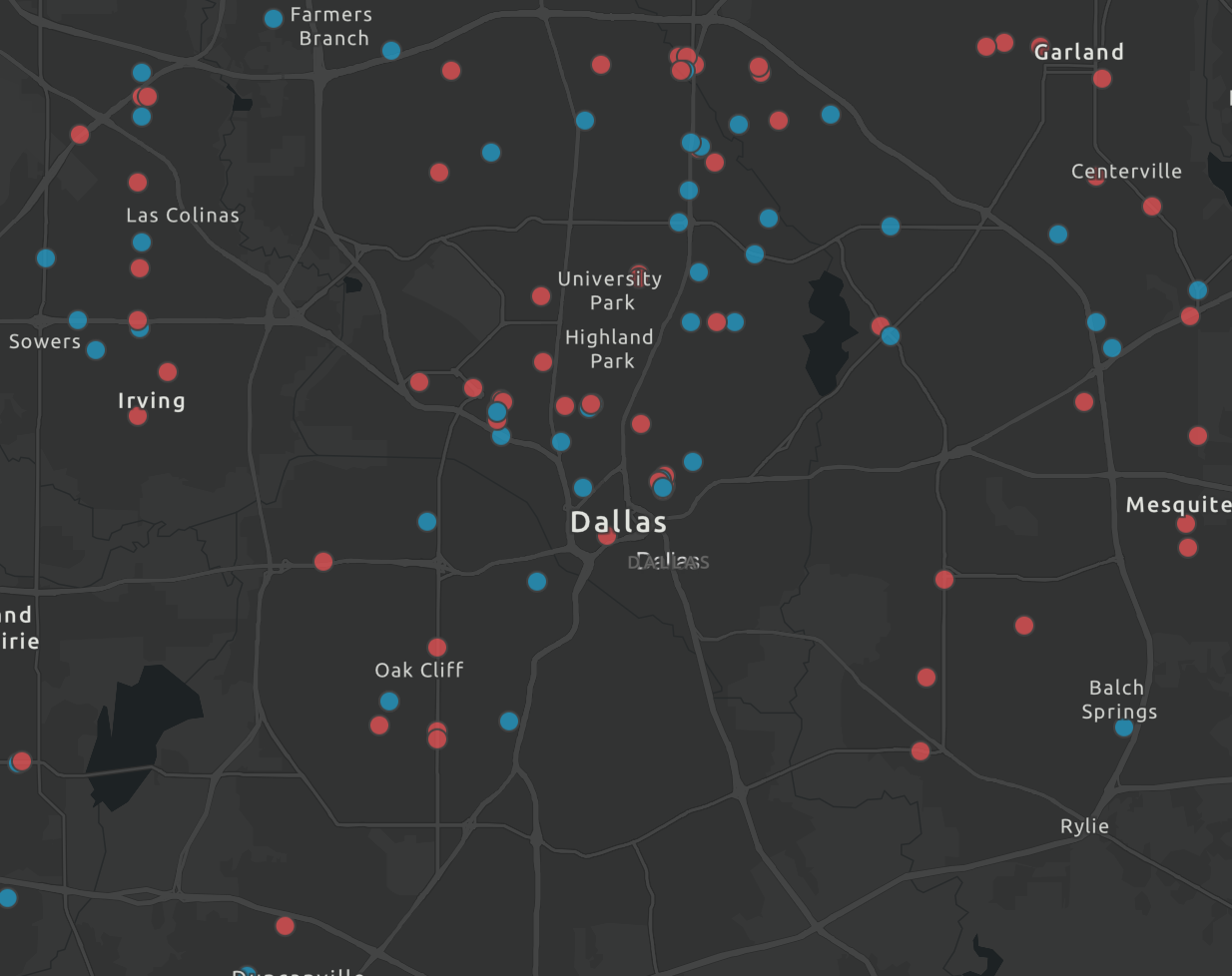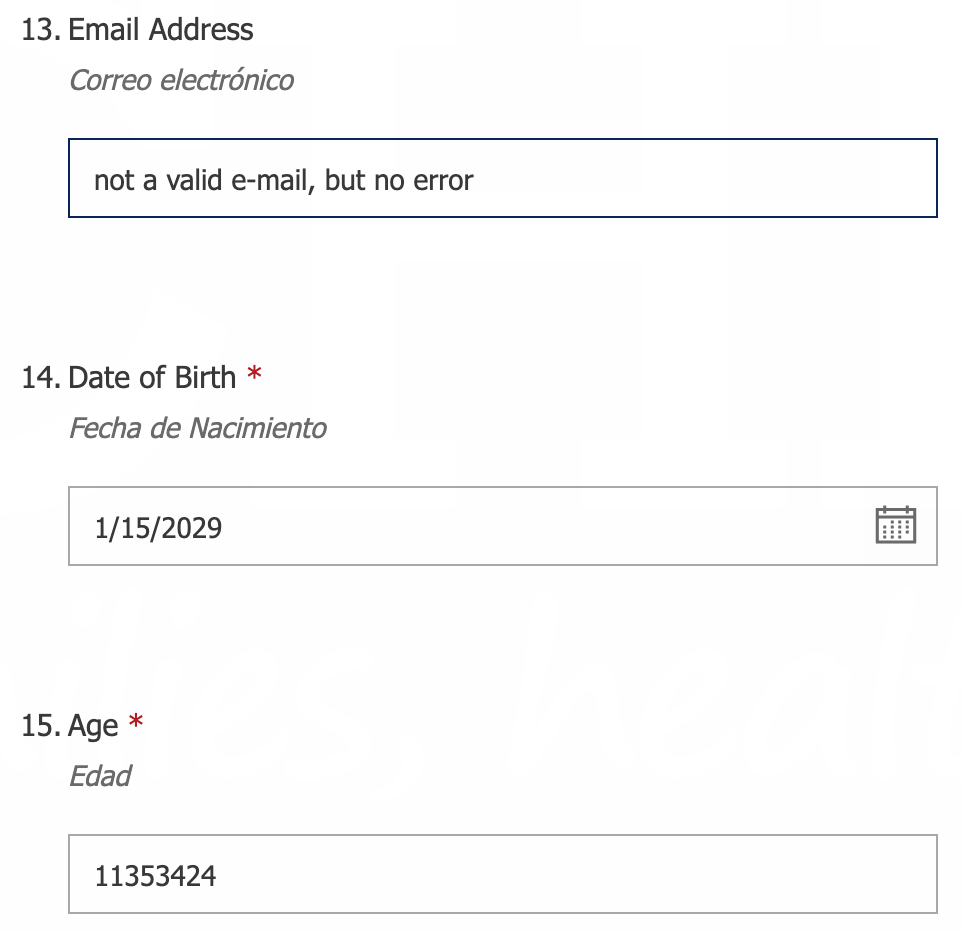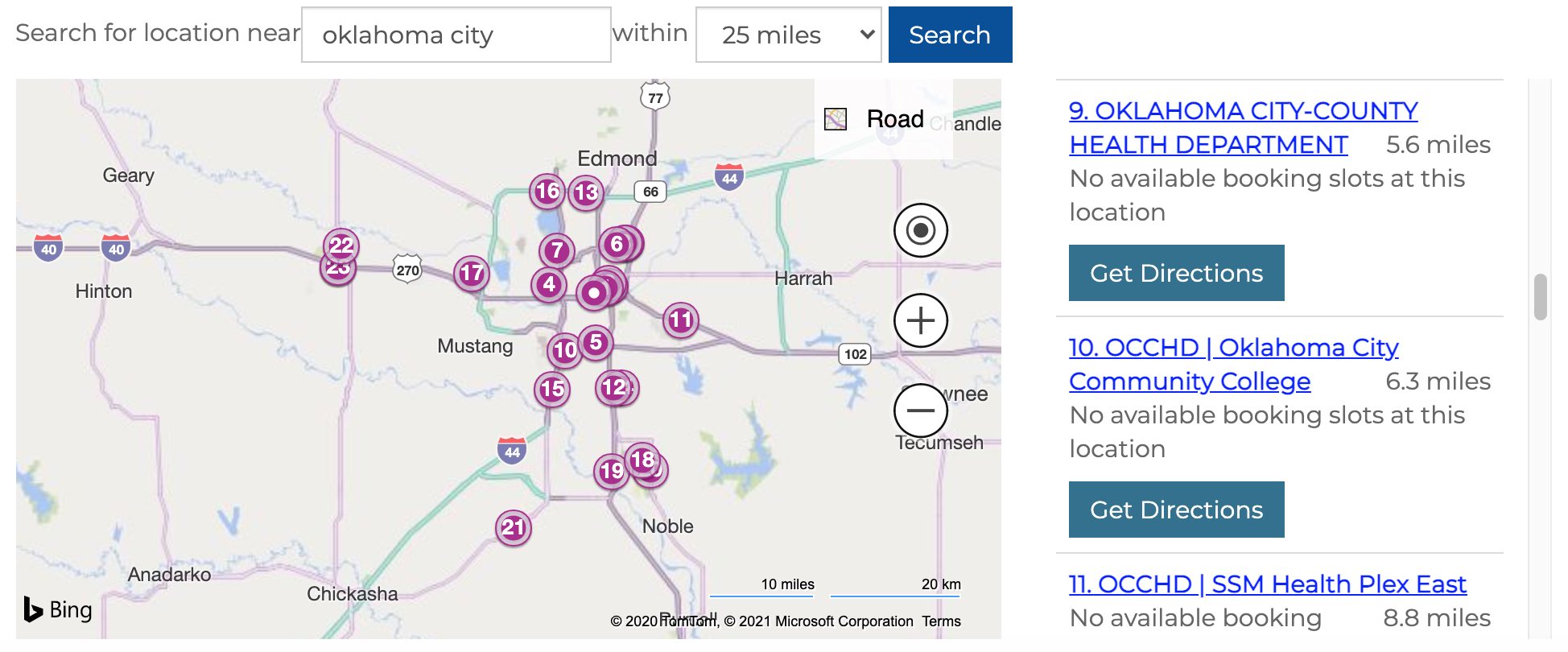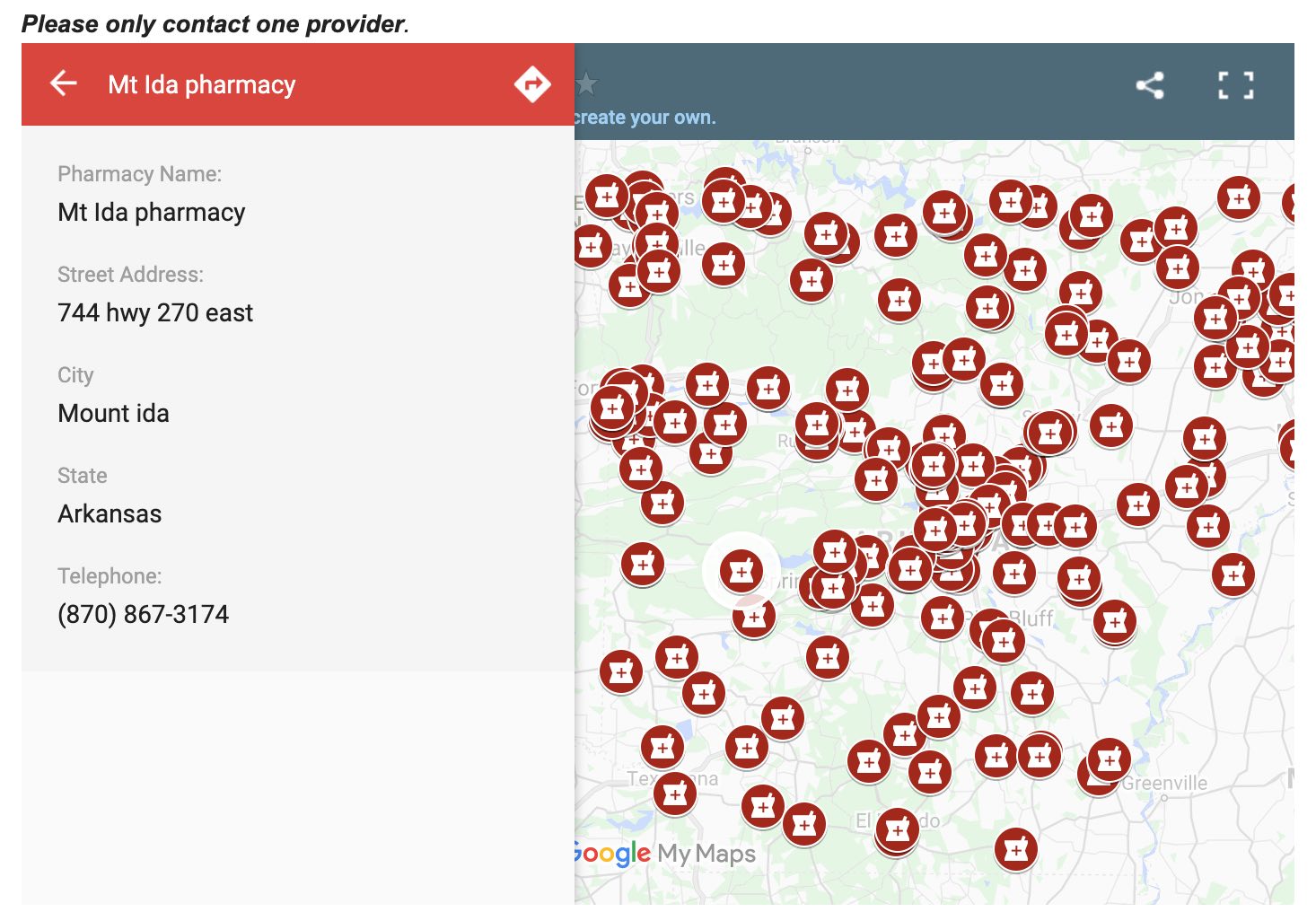As we study Coronavirus vaccine distribution infrastructure in the US, we are baffled by the inefficiency and duplication of resources required. In this post, we explore the digital vaccine distribution infrastructures in Texas, Oklahoma, and Arkansas. Spoiler Alert: it’s a mess.
Texas Vaccine Strategy

The State of Texas created a web site with a map of Texas and scattered dots. When this site first launched, a user would select a dot and see a table with fields related to a vaccination location. For nearly a week, the phone numbers listed for various locations were incorrect. I called 10 of them near me and 8 of those had the wrong phone number listed. I check this site daily and I have not found it useful yet. I will keep looking, but my expectations of this one have been low from day 1.

In Texas, each county appears to have its own “waitlist,” assuming it has one at all. These waitlists are not standardized and their functions are dubious at best. I suspect they are primary intended to reduce call volume for a vaccine hotline or 2-1-1 services. The form for Dallas county is particularly amusing. It fails to correct malformed e-mail addresses as they are entered, allows the user to select a date of birth in the future, and THEN asks the user to enter an age. It’s a form that uses Office 365. Who is receiving this data? How much work is required to clean it? How do we know this data will be kept secure? We don’t.
The Oklahoma Approach

The state of Oklahoma uses a centralized system and a locator e-mails you a link to a map verifying some personal information using vaccinate.oklahoma.gov. I was able to find one location in the entire state that would let me schedule an appointment, but the next page warned me that anyone who is not an Oklahoma resident would be turned away. The site works better than the Texas approach, but as of this post, vaccine availability still appears basically non-existent.
Arkansas, you got this?

Arkansas provides a map at healthy.arkansas.gov that lets users click on a dotted map for contact information at individual pharmacies. Not sure how the pharmacy system in Arkansas works, but most of them seem to be independent pharmacies rather than chains. I called a few and some would allow you to speak to a human. Some would refer you to a web site that could be hypothetically used to make an appointment or sign up for another waiting list. The phone numbers were correct on all the ones I called, but I didn’t get any closer to vaccination. I think it’s safe to say this method has placed an undue burden on these pharamacies and the state of Arkansas should be ashamed of itself.
What happened with Google?
Instead of providing a centralized infrastructure for vaccine distribution and information, the federal government left things up to the states. Although Donald Trump and Deborah Birx promised the public that Google was working on a web site back in March 2020, we still don’t have such a web site in 2021. In the software industry, we usually call this vaporware. Google eventually made this web site, but it still won’t help you find a place to get tested.
So, was Trump bad at web sites? Well, not when it comes to web sites made by the Trump Organization when it comes to golf. I’d highly recommend users check out TrumpGolf.com, a site that links to 19 different individual web sites for Trump-branded golf clubs across the globe. Each of these clubs has a site with a layout that is consistent and easy to navigate, clearly designed and likely maintained by a central entity. We wonder why this same careful approach was not taken with testing or vaccine distribution.
Part of Trump’s allure was the idea that he would run the government more like his businesses. It’s a shame that when lives were at stake, it didn’t operate like that.
